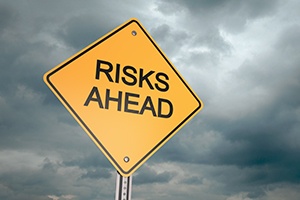 I am reasonably convinced that the economy remains solid—although my conviction is softening (see yesterday’s Economic Risk Factor Update)—and that the market is more likely headed higher than lower through the end of the year. But there have been an increasing number of events that, while not really quantifiable, are making me go hmm. So, in the interest of giving some time to anecdotal data and not just the quantifiable stuff, here we go with some economic signs and portents.
I am reasonably convinced that the economy remains solid—although my conviction is softening (see yesterday’s Economic Risk Factor Update)—and that the market is more likely headed higher than lower through the end of the year. But there have been an increasing number of events that, while not really quantifiable, are making me go hmm. So, in the interest of giving some time to anecdotal data and not just the quantifiable stuff, here we go with some economic signs and portents.
Apple hits $1 trillion in market capitalization
It’s just a number and nothing special. Still, when one company is worth that much, it raises the question as to whether it is overvalued. Maybe by a lot. Major milestones often occur at tops, and this is a big one.
Facebook loses more than $100 billion in one day
Along the same lines, Facebook’s recent pullback showed there was quite a bit of confidence baked into its valuation. When that confidence went, so did much of the value. Facebook is one of the market leaders and a revolutionary, successful company. If it can happen to Facebook, we at least have to consider that it could happen to others as well.
Tesla (possibly) going private
Whether it does or doesn’t, Elon Musk’s ability to float the idea—and have investors bid up the value of the company by 11 percent, without any supporting data—is one more piece of evidence for the high level of confidence baked into prices. This would also be the largest leveraged buyout in history, if it happened, and record-setting deals typically happen at market peaks. This is a twofer.
Valuations break through 2000 levels
According to the Leuthold Group, the price-to-sales ratio for the S&P 500 is now where it peaked in 2000. I like price-to-sales because it is much harder to game, so this is worth noting. Even more concerning is that when you use the median price-to-sales ratio, which corrects for the distorting effects of the most highly valued companies, the ratio is 75 percent above the 2000 level and almost 50 percent above the 2007 level, which was the high. The market as a whole has now cracked the only previous ceiling and proceeded to move even higher. On one hand, that means there is no resistance to stop further increases. On the other hand . . .
Emerging markets are showing bigger cracks
We have Turkey potentially facing an economic crisis, Iran under sanctions and with riots in the streets, and Brazil confronting another political crisis. These are just the minor issues. The big one is China. Its currency has depreciated substantially against the U.S. dollar, retail sales have dropped (very unusual), and the government has ramped up economic stimulus measures to contain the damage from the trade war. It looks like things are under control, and maybe they are. But the chances that control will break look to be rising.
The trade war
So far, markets have been ignoring the accruing economic damage from tariffs. But the media is increasingly focused on the costs, so that will become harder. As the damage grows and as the headlines become more visible, that could start to crack some of the market confidence. From an economic perspective, the damage should be containable—unless those tariffs scale up significantly, which is reportedly being considered. A tariff-driven trade war was a key contributor to the Great Depression. What happens if markets remember that?
Rising deficits and interest rates
The Fed has been quite clear that it sees strong economic growth and will keep raising rates to contain inflation. The deficit is poised to increase substantially over the next 24 months, so the Treasury will need to borrow much more. We don’t know how much excess lending supply is available, so we will find out the hard way as the Treasury’s demand mounts.
If the excess supply is insufficient, basic economics tells us what happens when rising demand meets insufficient supply: prices rise. In this case, the price is the price of money (i.e., interest rates), which could go up substantially. Treasury security interest rates are the foundation of all financial values, and bad things can happen when you shake foundations.
Lots to worry about
Just to be clear, all of these issues are in the public eye, and markets have decided to more or less ignore them. Buoyed by strong economic performance and very strong increases in corporate sales and profits, markets have remained confident and aggressive. I expect that will likely continue through the rest of the year.
With all of these concerns more likely to grow than fade, though, it is worth keeping in mind that the fundamentals don’t always dominate and that quantitative data can’t tell us the whole story. Going forward, we will be spending more time on these qualitative stories and what they mean.


 Print
Print

